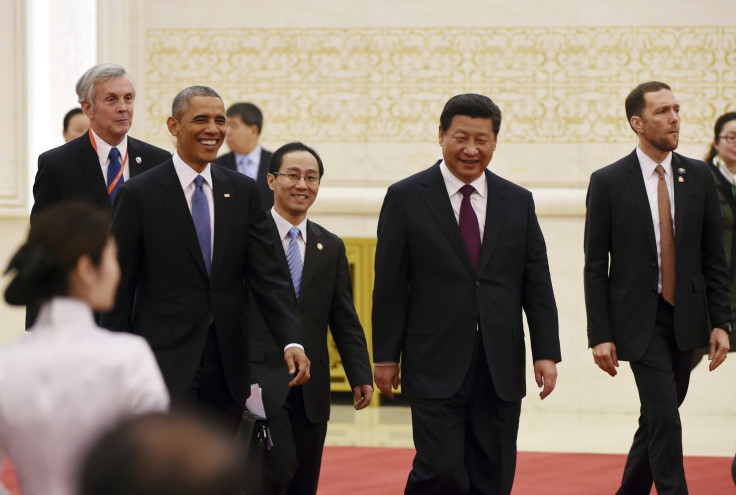US And China Climate Change Deal: 5 Uncertainties That Remain After New Emissions Pledges

The world’s two largest polluters have struck a deal to shoulder the burden of curbing climate change by significantly reducing greenhouse gas outputs. The pact between U.S. President Barack Obama and Chinese President Xi Jinping, announced Wednesday, would see both countries take dramatic approaches toward cutting carbon emissions.
"As the world's two largest economies, energy consumers and emitters of greenhouse gases, we have a special responsibility to lead the global effort against climate change," Obama said Wednesday in a joint news conference. "We hope to encourage all major economies to be ambitious -- all countries, developing and developed -- to work across some of the old divides, so we can conclude a strong global climate agreement next year.”
Obama described the deal as “a major milestone” in U.S.-China relations, however, the specifics of the agreement and how it could impact global emissions remains hazy. Under the deal, the U.S. would roll back its 2005 level of carbon emissions by 26 to 28 percent before the year 2025. China would aim to get 20 percent of its energy from zero-carbon emission sources by the same year and to reach the height of its carbon emissions by 2030.
Below are five questions left unanswered by Wednesday’s announcement.
1. Who Will Verify Carbon Cuts Around The Globe?
The U.S. and China hope that by agreeing to reduce carbon emissions, other countries will be encouraged to follow suit, however, who will follow up and keep them on track is unclear. The United Nations is expected to establish guidelines later this year for creating a system for corroborating countries’ carbon pledges.
2. How Transparent Will China Be?
While news of the deal between the U.S. and China quickly made headlines around the world, China’s state-run press was slow to report it, the Los Angeles Times noted. While it doesn’t necessarily indicate a lack of commitment from China’s leaders, the Chinese government is not known for providing information freely.
3. How Will The Cuts Affect Energy Costs In The U.S.?
Obama has touted the plan as a way to save “billions” on energy casts back home. Officials said incentives will be offered to develop more solar and wind power, but the details of those initiatives are not yet known.
4. Can Obama Keep The Promise?
The president has made a commitment to cut greenhouse gas emissions in the U.S. by the year 2025 -- two (possibly three) presidencies from now. Whether future U.S. leaders, as well as Congress, will take his pledge seriously is anyone’s guess.
5. Does China Have The Means To Do It?
For China to meet its emissions goals, it will have to invest huge amounts of resources into clean energy at a time when its economy is slowing and its energy consumption continues to rise. “When you look at the growth of energy consumption in this country, that's a lot of windmills and solar panels,” NPR's Scott Horsley said.
© Copyright IBTimes 2024. All rights reserved.






















